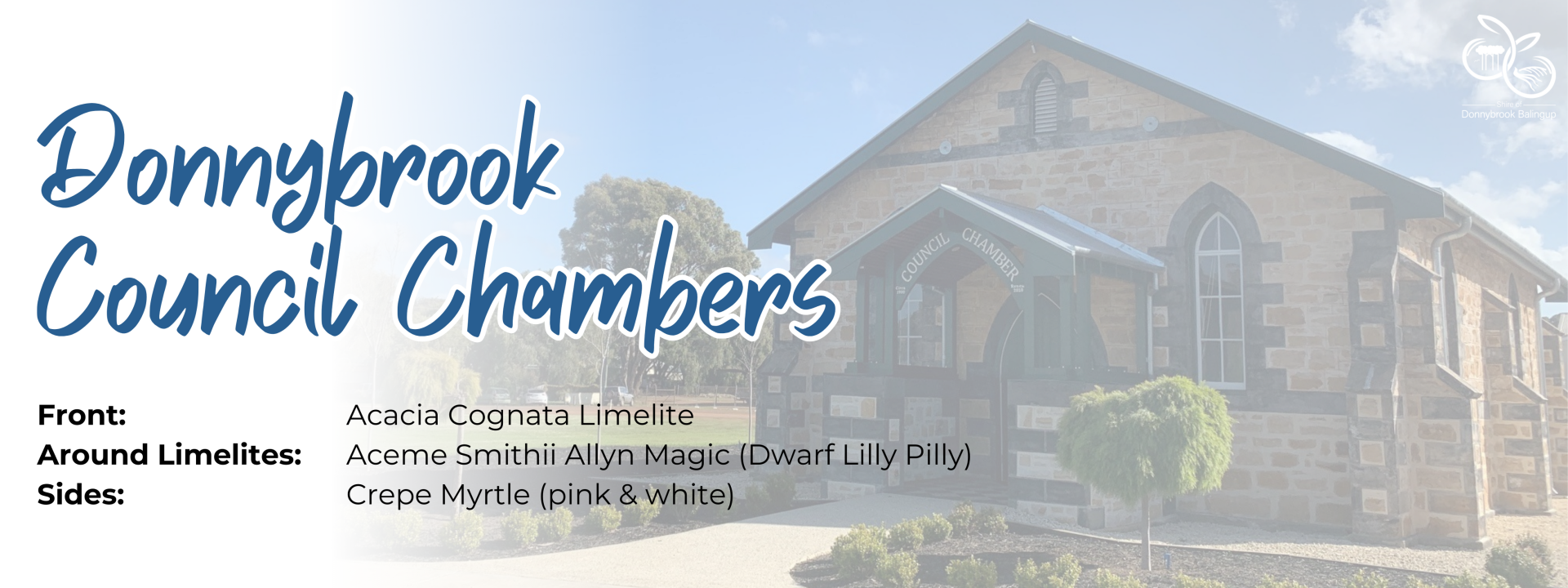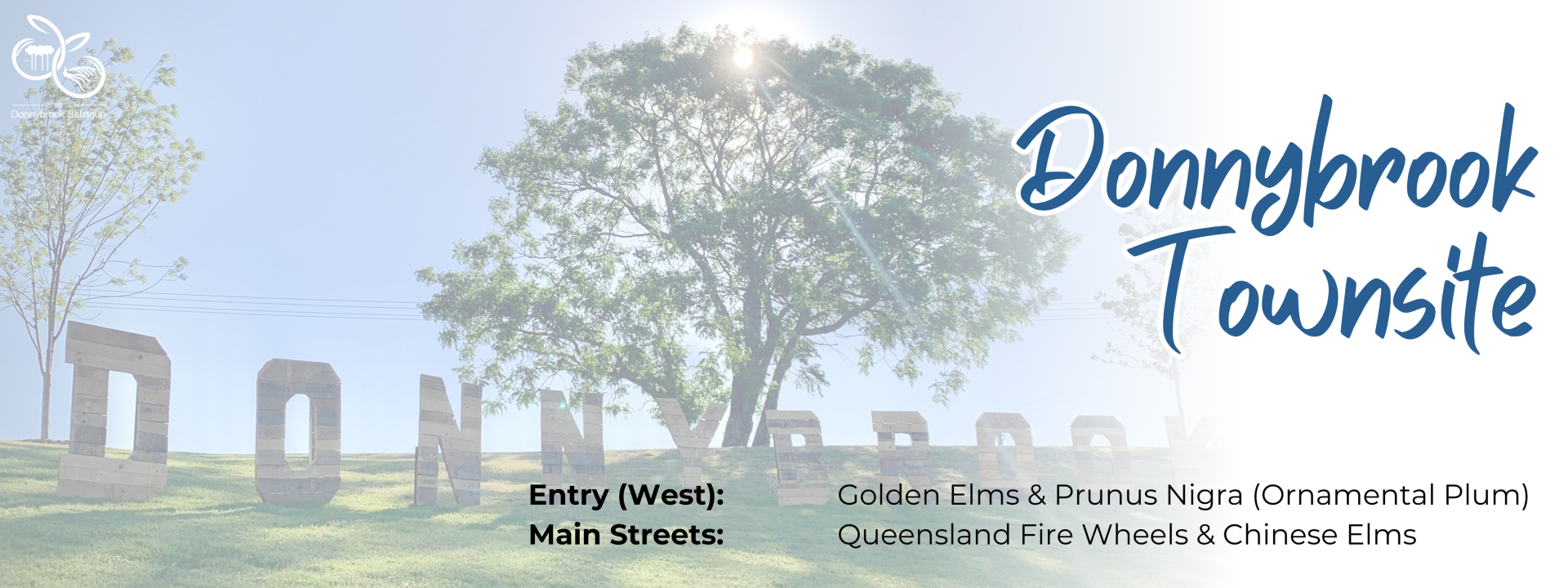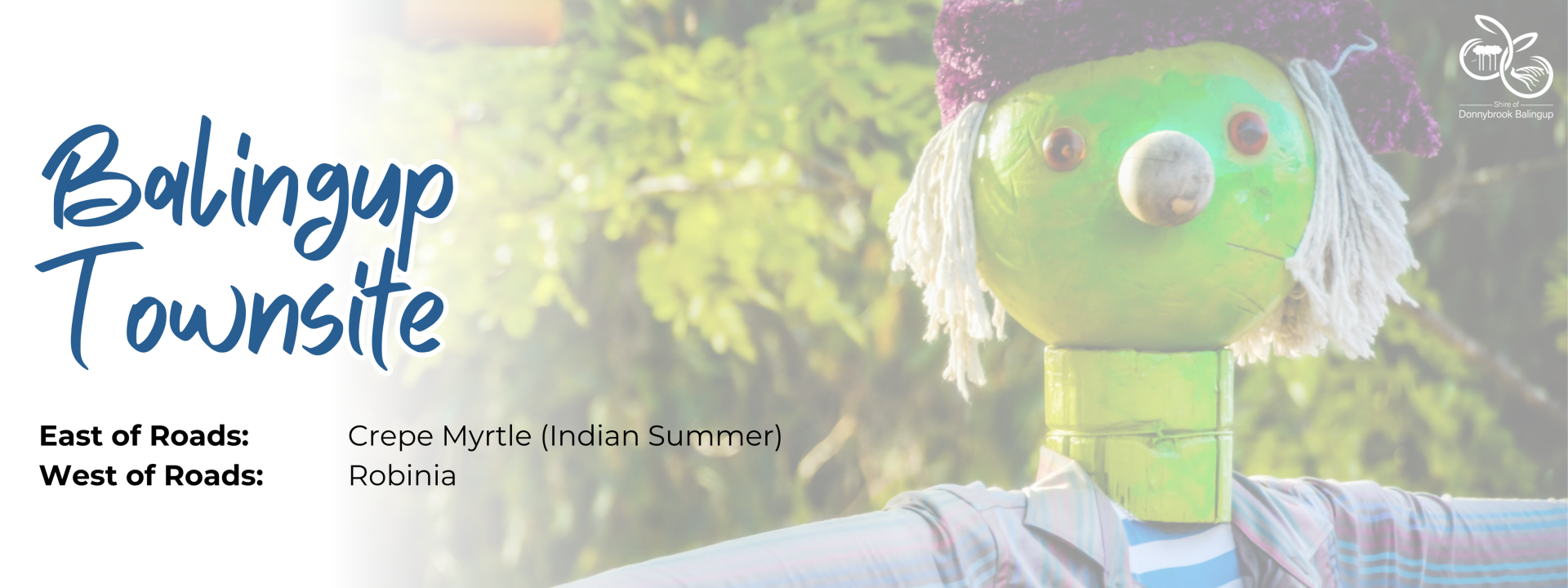The Shire of Donnybrook Balingup is committed to looking after the local environment, and is working on developing a range of resources for you to access here.
Environmental Education Waste Information
Kaya noonakoort. Wandju, wandju, nidja Noongar Boodja. Hello everyone. Welcome to Noongar country.
The Shire of Donnybrook Balingup acknowledges the traditional custodians of the land, the Wardandi People of the Noongar Nation, and pays its respects to Elders, past, present, and emerging.

Collie Donnybrook Balingup: Natural Resource Recovery Program 2024 - 2025
In December 2023, the Shire of Donnybrook Balingup was informed that it was successful in receiving $409,656 via the State NRM Program, which will go towards the Collie Donnybrook Balingup Natural Resource Recovery Program.
Community Stewardship Grants provided via the State NRM Program contain six (6) priorities, all of which our Project aims to achieve. They are as follows:
Priority 1: Sustainable management of land resources.
Priority 2: Maintain and enhance water assets.
Priority 3: Project and enhance the marine and coastal environment.
Priority 4: Conserve and recover biodiversity.
Priority 5: Enhance skills, capacity, and engagement.
Priority 6: Deliver high quality planning that leads to effective action.
Funding for this program was sought by both Shires in response to the identification of blackberry as a significant pest across the landscape, and to increase the benefit of previous projects to control blackberry. In 2020, the Shires of Donnybrook Balingup, Collie and Dardanup were successful in obtaining Federal funding to carry out blackberry control across the three local government districts. This previous project proved highly successful, resulting in approximately 600km of waterways being mapped for the presence of blackberry and 1,200 hectares of blackberry controlled over a 12-month period. All landowners who registered their interest had treatment carried out using local contractors.
View the Landowner Information Sheet
Submit an Expression of Interest (Landowners)
- Please ensure you have made your submission by 4:00pm on 30 April 2024.
- Submissions can be made by completing the above form and emailing shire@donnybrook.wa.gov.au, or by mail to PO Box 94, Donnybrook, WA 6239. Alternatively, you can drop them in at the Shire Administration Office at 1 Bentley Street, Donnybrook.
Learn more about the State NRM Program
What plants are found at main locations in the Shire?



Preferred Plants
Our preferred plants for the Shire district include:
- WA Peppermint Trees (Agonis Flexuosa), average height of 9m.
- An iconic native tree to the Southwest, producing small white flowers in Spring. WA Peppermint Trees are drought and salt tolerant, and can be pruned to various shapes (including shrubs). These are known to attract Western Ringtail Possums and other pollinators.
- Kings Park Bottle Brush (Callistemon Citrinus), average height of 4m.
- This plant produces brilliant red flowers, and is hardy enough to tolerate most soil types. The Kings Park Bottle Brush is a good option to consider if the planting location is under overhead powerlines. They can be pruned to shape, and are known to be a great hedging plant. They attract Western Ringtail Possums, birds, and other pollinators.
- Red Flowering Gums (Corymbia Ficifoli), average height of 9m.
- Red Flowering Gum is a tree native to the Southwest, producing bright pink flowers in Summer. They have deep green leaves, and prefer sandy, gravelly soil. These plants are also known to attract birds.
- Pincushion Hakea (Hakea Laurena), average height of 6m.
- Puncushion Hakea sizes vary from a large shrub to a small tree. They showcase stunning red stems from their globe shaped flowers and blue-green leaves, opening late Autumn and throughout Winter.
- Coral Gums (Eucalyptus Torquata), average height of 7m.
- Native to the Goldfields, the pink flowers on this tree bloom in Spring, from August through to December. They feature greyish leaves and rough bark, and are unique/endemic to WA.
- Swamp Paperbark (Melaleuca Rhaphiophylla), average height of 6m.
- These trees feature white flowers in summer, attracting bees and birds. They thrive in wetter soil, and are native to the Southwest.
- Crepe Myrtle (Lagerstoemia), average height of 6-8m.
- Crepe Myrtles are non-native deciduous trees, with a vase shaped profile. They can be pruned to shape, with their prolific bright pink flowers blooming in Summer. This plant can be found to the east of roads in Balingup.
- Flowering Plum (Prunus Nigra), average height of 5m.
- These non-native deciuous trees, similar to the Crepe Myrtle above, showcase a vase shaped profile. They bloom in Spring with pink-white flowers, followed by deep burgundy leaves in the Summer.
- Japanese Maple (Acer Palmatum), average height of 4m.
- These small ornamental trees feature a five (5) lobed leaf that is light green, turning a deep orange or crimson in Autumn.
- Trident Maple (Acer Buergerianum), average height of 6-8m.
- These smaller deciduous trees produce small, triangular and tri-lobed leaves. The new Spring foliage is a rich bronze/red colour, maturing to a dark green in Summer. In Autumn, the colours change from yellow, to orange, and then red. These can be found in the main areas of the Donnybrook townsite.
- Tuckeroo (Cupaniopsis Anacordioides), average height of 5-8m.
- Tuckeroos are a rounded, shady evergreen tree. Blooming in Autumn, the cream-coloured flowers will turn into an orange fruit. They establish quickly, have non-invasive roots, and tolerate drought and frost once grown.
- Golden Ash (Fraxinus Excelsior), average height of 7m.
- These trees are deciduous, spread, and are a hardy specimen tree. They feature an attractive yellow bark with lime green foliage that turns yellow in Autumn. They feature sooty black buds in Winter, and will endure warm conditions in sun or shade. These are planted at the western entry to Donnybrook.